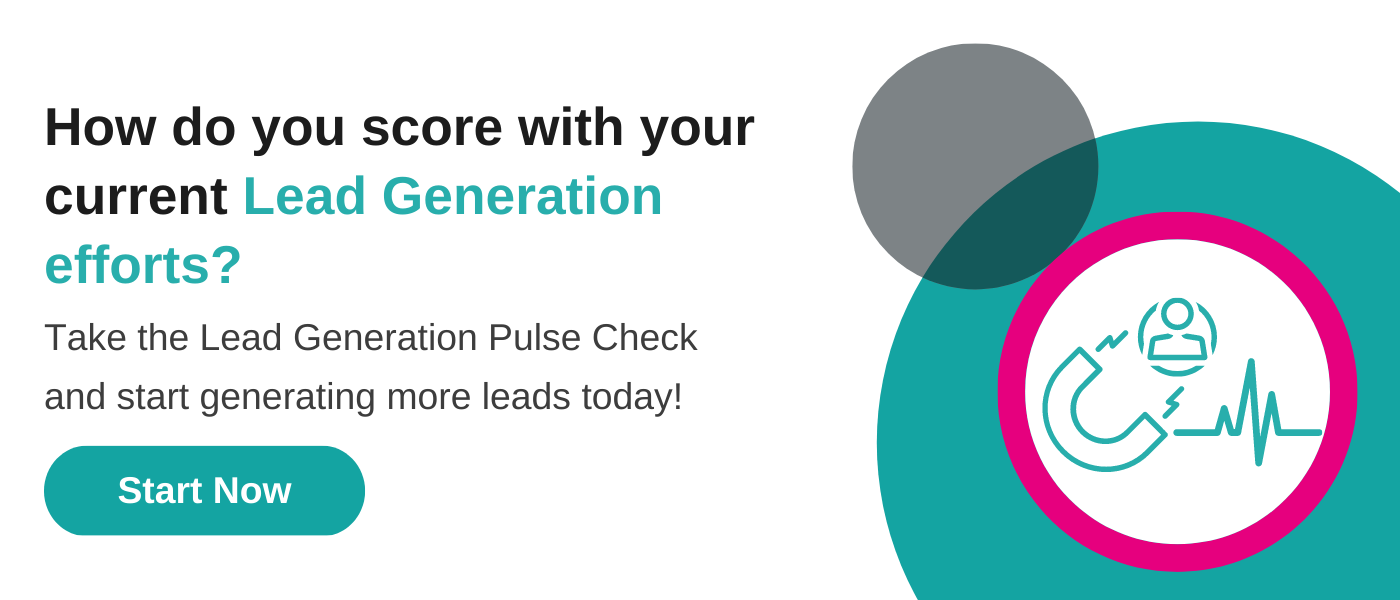Is it better to set hard-and-fast targets for B2B lead generation, or just aim for “as many as we can get?” Business owners often think more leads will always be a good thing, but it’s much better to crunch the numbers and set clear goals.
This will help you make better decisions about how much you need to spend and what you ought to do. It will also encourage you to work the leads that you have harder, rather than driving more leads into an inefficient marketing and sales pipeline.
So how can you accurately calculate how many leads your business needs? This post will share a quick exercise that will help. Here’s what you’re going to need:
- Your financial targets for the next 12 months
- Sales data for the last 12 months
- A calculator or a spreadsheet (here’s one that we have prepared that you can use)
Want 4 more exercises to improve your lead generation?
Our Lead Gen in 10 workbook will give you five useful exercises to improve every aspect of your lead generation.
What’s your new business objective and average deal value?
How much new revenue do you want to generate over the next 12 months? It’s worth bearing in mind that we’re talking about revenue from new qualified leads, not repeat customers or cross-sells. This figure should already have been set as part of your annual business strategy.
Once you have this figure, we need to work out how many sales you’ll need to close to hit this target. Here’s how to do it:
- Divide your new customer revenue for the last financial year by the number of new sales closed over that period. This will give you your average deal value
- Now divide your target revenue by your average deal value to see how many new customers you need to hit your target
Practical example
We're going to keep things simple for the sake of this exercise. This calculation might be a bit more complex for your business - for instance, if you operate on a ‘retainer or subscription model rather than one-off sales - but the principle still applies.
Let’s imagine that our financial target for revenue from new customers this year is £250,000. Last year we closed 30 new sales with a total value of £200,000 giving us an average deal value of £6,667.
So in order to meet our target, we’re going to need to close at least 38 sales from new leads.
Calculate your contact to MQL to SQL conversion rates
Every business has a slightly different buyer journey. But in general, for smaller businesses, the key stages to measure can be broken down as follows:
- Contact - a new contact that’s added to your CRM database
- Qualified Lead - a potential customer that marketing and sales agree they want to work with
- Customer - a paying customer
Some contacts will become qualified leads and some won’t. Conversion rates tell you how many people at each stage progress onto the next. Check out the first piece in this series if you’re not sure how to define a lead for your business at different stages of the buyer journey.
By working backwards from a customer, to a qualified lead, to a contact, we can calculate the number of contacts we’ll need to generate at each stage to hit our sales target.
Practical example
Last year we had 400 contacts. 100 of those were qualified as leads and 30 of those qualified leads became customers. This gives us a contact-to-lead conversion rate of 25% and a lead-to-customer conversion rate of 30%.
Keep in mind that conversion rates from different sources can vary wildly. For instance, conversions from customer referrals may be much higher than leads from outbound sources, because the lead tends to enter the process with a higher level of trust.
It’s worth analysing the conversion rates of different sources to identify your top-performing sources of new opportunities. This will help you do more of what’s working and either improve or deprioritise channels that aren’t. That said, bear in mind that sales rarely occur as a result of a single touchpoint. It’s usually down to a combination of channels working together.
How many new contacts will you need?
This is the final stage in the process. We’re going to combine the targets from step one with the conversion rates from step two. This will tell us how many contacts we need to generate in order to hit our revenue target.
Practical example
We want to increase our number of customers from 30 last year to 38 this year. This is an increase of 27%. All we need to do now is apply that increase to the leads and contacts we generated last year, which gives us targets of 126 leads and 504 contacts respectively.
We now know that to hit this year’s sales targets our marketing team will need to generate:
- 38 new customers
- 126 leads
- 504 contacts
Once you’ve calculated your lead generation targets and benchmarked your conversion rates, you’ll be able to track your performance against these metrics on a monthly or quarterly basis. You’ll also be much better placed to decide what you need to and what you need to spend to hit your targets.
It’s worth sense checking whether this target is realistic given the market you’re operating in and the resources at your disposal. If not, it might be worth focusing on other areas that can boost revenue.
Learn how to generate the leads your business needs
You now know exactly how many leads you need to generate from your marketing to hit your targets.
This is the second exercise in our Lead Gen in 10 series. For more exercises to help you close more new business from your lead generation activity, check out the other exercises below:
- What's a ‘good’ lead? And how to get sales and marketing to agree
- How to Land the Leads Your Business Needs
- The sales and marketing activities you need to push leads through the funnel faster
- How to re-energise 'old and cold' sales opportunities in your CRM
Or click here to get the entire series in one handy workbook.





